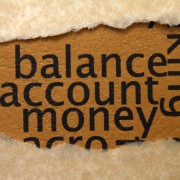FALLEN TREES AND FALLEN STOCKS
So it’s been two weeks since I walked on a sidewalk in my neighborhood in central Jerusalem. The combination of snow, ice and fallen tree branches has made them inaccessible. Now I know those of you living outside the capital can’t comprehend what we are going through, but I have gotten to like walking in the middle of the street at night, with no streetlights, in my black winter jacket. It’s sort of like a real-life video game, where you need to dart in between parked cars so you don’t get eaten, I mean, run over.
While it appears that the powers that be in the Jerusalem Municipality have taken to my idea of leaving all the trees and branches on the street to be used for Lag Ba’omer bonfires, neighbors are becoming restless and impatient. They are sick of the status quo and have started moving the obstacles instead of waiting for the city to do something. Unfortunately, most people have chosen the top of my street as their dumping ground, and we now have a pile of branches that measure about three meters high. The point is that for most, inertia is not a solution, and if the situation stinks, one needs to take action and make a change.
I recently opened up an account with an investor who then transferred his holdings to me from a well-known brokerage firm. After the transfer was completed, we sat down to review his portfolio. Some of his stocks were showing large losses, and he explained that he had bought some of them 14 years ago, at the top of the Internet bubble, and some others he bought about six years ago, a year before the financial crisis started. He certainly doesn’t have the best timing! He was aware that the stocks were well below the price he paid for them, but said he was waiting to sell them until they got back to his initial purchase price. I can’t begin to tell you how often I hear that approach taken. Some investors will hang on to a losing position for years in the hope that it will return to the original price they paid for it. Unfortunately, this is not a particularly effective investment strategy.
Bad call
Let’s say you read about a company that sounded like an interesting prospect. After doing some research, you decide to invest in this company because it seems like a winner. But when you receive your first statement, you see the stock has dropped. So you decide to follow the policy of being patient.As time goes by the stock keeps dropping. The stock market may be moving up, but you will find yourself stuck with a loser.In fact, chances are that if the stock starts dropping by 10, 15 or 30 percent, there are problems with the company and it pays to sell. The problem that many of us have, however, is that it is very difficult for us on a psychological level to admit that we picked the wrong stock. It’s hard for us to say that we made a mistake.
Opportunity cost
It is important to note that the longer you hold onto the under-performer, the more money it costs. The reason for this is that the investor could have put his funds into something that actually made money. Therefore, stubbornly holding onto a losing stock will only cause the investor financial harm. In economics, this situation is referred to as opportunity cost. Opportunity cost is defined as the cost of an alternative that must be forgone to pursue a certain action, or the benefits that could be received from taking an alternative action.
Profit from losses
Never think that all is lost. Some good can actually be derived from losing stock positions. When the position is sold, the investor realizes the loss, which has certain tax advantages. The loss can be used to offset other gains, thus lowering the tax bill.Many professional investors live by the credo that you should ride your winners and dump your losers. The reason is simple: The stock is probably performing poorly because the company is not performing up to par. This indicates that it is probably a good place for you, the investor, to look elsewhere. Don’t let inertia set in. No emotions; take action and clean up the fallen stocks from your portfolio.
The information contained in this article reflects the opinion of the author and not necessarily the opinion of Portfolio Resources Group, Inc., or its affiliates.
Aaron Katsman is author of the book Retirement GPS: How to Navigate Your Way to A Secure Financial Future with Global Investing (McGraw-Hill), and is a licensed financial professional both in the United States and Israel, and helps people who open investment accounts in the United States. Securities are offered through Portfolio Resources Group, Inc. (www.prginc.net). Member FINRA, SIPC, MSRB, SIFMA. For more information, visit www.aaronkatsman.com, www.gpsinvestor.com or email aaron@lighthousecapital.co.il.






